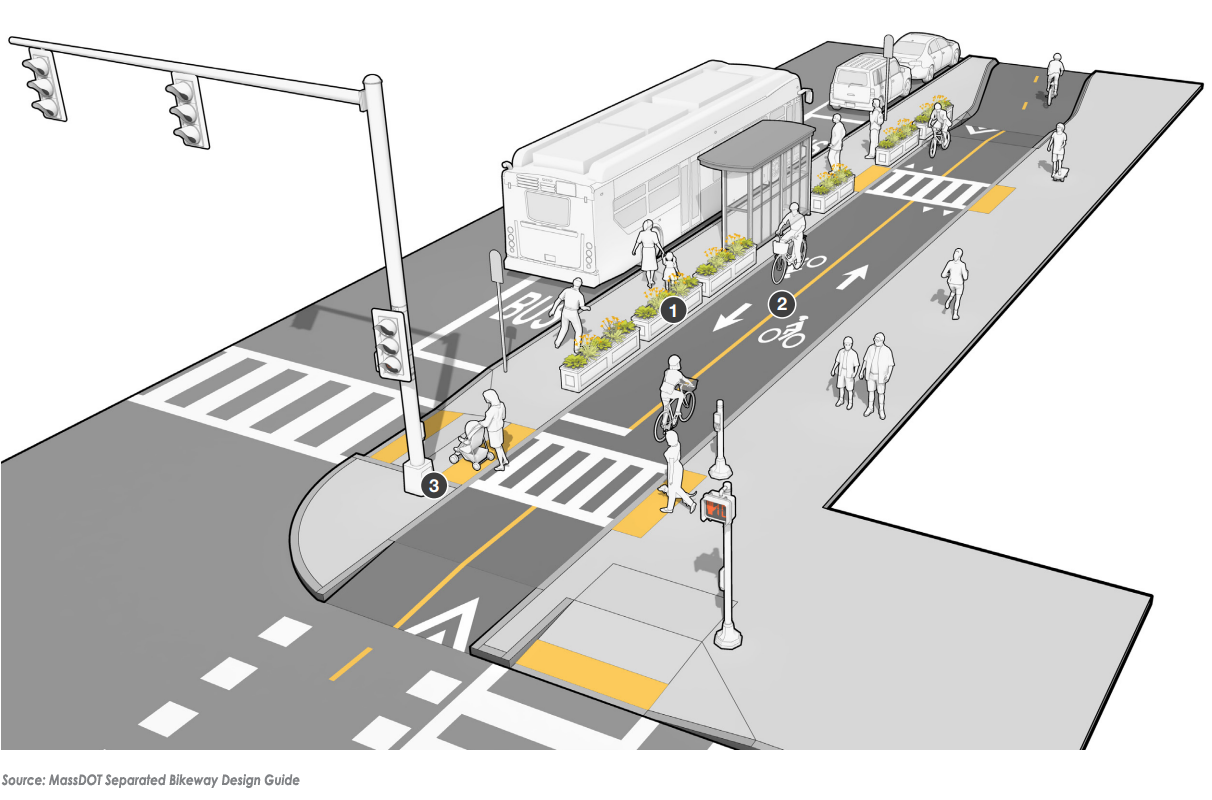Countywide Bikeways Facilities should prioritize transit operations and transit rider comfort along with multimodal safety, as appropriate.
Alameda CTC encourages designers to use the Complete Corridors Approach described in the Countywide Transportation Plan (CTP), especially on operator-identified major bus corridors, to balance multimodal priorities. Designers should demonstrate appropriate and substantive coordination with transit operators beginning early in the process and at major design decision points. Additionally, designers should demonstrate efforts to improve bus service travel time, reliability, and quality.
MTC requires coordination with relevant transit agencies as part of their Complete Streets Checklist, which is required for most roadway projects seeking regional funding.
- Improve Bus Service Frequency, Reliability, Quality and Travel Time
- Manage the Curb to Balance the Needs of Multiple Users
- Build the Low-Stress Walking and Biking Network, including Low-Stress Facilities on Arterials and/or Alternative Routes
- Plan and Deliver Urban Greenways and Trails
- Support Modern Traffic Signals and Operate Seamlessly Across Jurisdictions and Deliver Robust Transit Signal Priority.
MassDOT Chapter 5
The MassDOT Separated Bikeway Design Guide provides guidance on designing bus stops together with separated bikeways. The guidance provides some best practices for bus stop design, but all design concepts should be reviewed with local agencies throughout the design development process. Multiple components of the bus stop design need to be confirmed and coordinated with the transit agency, including:- Bus stop location, including potential relocation to far side where needed
- Bus stop length, entry and exit tapers, and clearance from crosswalks
- Door locations
- In-lane or pull-out configuration
- Ramp deployment zone, which is minimally 8’ deep for ADA access.
- Bikeway separation type, whether via grade change, barrier, tactile strips, or other separation



